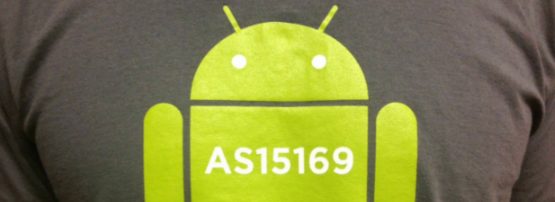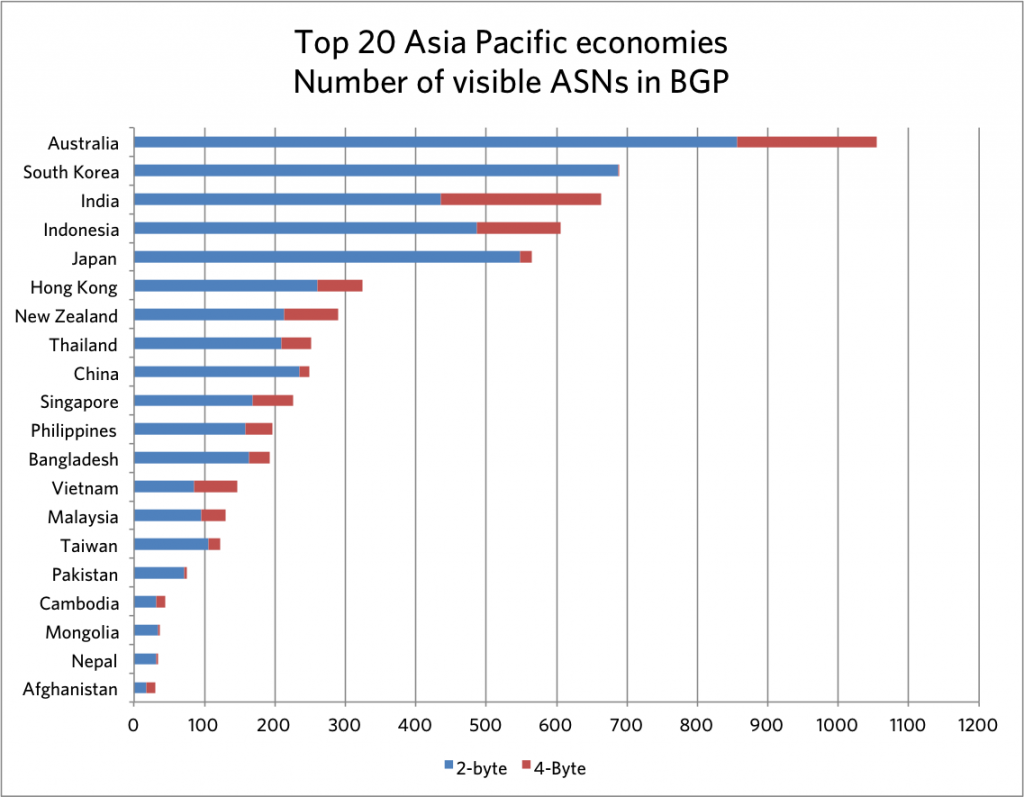
An Autonomous System Number (ASN) is a number used by network operators to uniquely identify an independent IP network that has its own routing policies. More information on how ASN works can be found here.
Initially, ASNs were defined as a 16-bit (2-byte) number. But as the Internet—and the number of independent networks, each of which needs a globally unique ASN—grew, the IETF introduced the concept of a 32-bit (4-byte) ASN (RFC 4893, published in May 2007).
Since then, IANA and the five Regional Internet Registries have started distributing 4-byte ASN, in addition to the 2-byte ASN.
Today, the 2-byte ASN pool in IANA is almost exhausted, with less than 500 remaining. As the next request to the IANA by any of the RIRs might bring this figure down to 0, now is a good time to check how widespread the acceptance of 4-byte ASNs is in the Asia Pacific region.
To be able to use a 4-byte ASN, a network must meet three criteria:
- The network must have a border router that supports 4-byte ASN. As most new routers from major vendors support it, this criteria is relatively easy to meet. All the network needs to do is upgrade their existing router’s operating system to the version that supports 4-byte ASN, or buy a new router.
- The network’s upstream and peers must support 4-byte ASN. This is not as easy to fix as the issue is outside of the network’s own control. This in fact is the most common reason for a network’s inability to accept a 4-byte ASN assignment from an RIR. There is an ‘interoperability’ model where the external peer sees the 4-byte ASN as an instance of the special 2-byte ASN value “23456” and this mechanism is widely adopted as well.
- The network must not need to use BGP ‘communities’ with the 4-byte ASN, because you cannot put a 4byte ASN into the community string format, which only has enough room for 2byte ASN.
What’s the rate of APNIC Members rejecting a 4-byte ASN delegation from their inability to meet any one of the above criteria? The 2014 ASN delegation statistics shows 28.8% of networks still insist on receiving 2-byte ASN, which is less than the 30.9% seen in 2013. It looks like things are getting better, as more and more networks use routers that support it.
Are 4-byte ASNs really being used?
To answer this question, with the help of George Michaelson from APNIC Labs, I looked at the global routing table as seen by APNIC’s R&D router (AS131072) and count how many active ASNs are there in this region, and what type of ASN they are. Here is a snapshot taken on 19 August 2014 showing the top 20 Asia Pacific economies with the most numbers of visible ASN in BGP.
As we can see, 4-byte ASNs are indeed used quite widely in the Asia Pacific region, with some economies deploying more than others. Hundreds of them are in active operation in Indonesia, Australia and India. APNIC hostmasters are reporting less and less networks unable to accept 4-byte ASN delegation. Some economies may have yet to deploy them, but there is enough experience in the region to learn from.
I’m interested to hear any insight on the level of acceptance in individual economies. If you can share any experience deploying 4-byte ASN in your network, whether it’s good or bad, please leave a comment below!
The views expressed by the authors of this blog are their own and do not necessarily reflect the views of APNIC. Please note a Code of Conduct applies to this blog.


Great post.. Some questions..
how many 2-byte vs 4-byte ASN assigned in last 6 months?
What is the main reason customer provide while asking for 2-byte ASN?
Hi Aftab, thanks for the comment.
APNIC assigned 96 2-byte ASNs and 245 4-byte ASNs to its direct members (excluding ASN block allocations to NIRs) in the last 6 months.
The most common reason for asking a 2-byte ASN is either the equipment or the upstream doesn’t support 4-byte ASN.